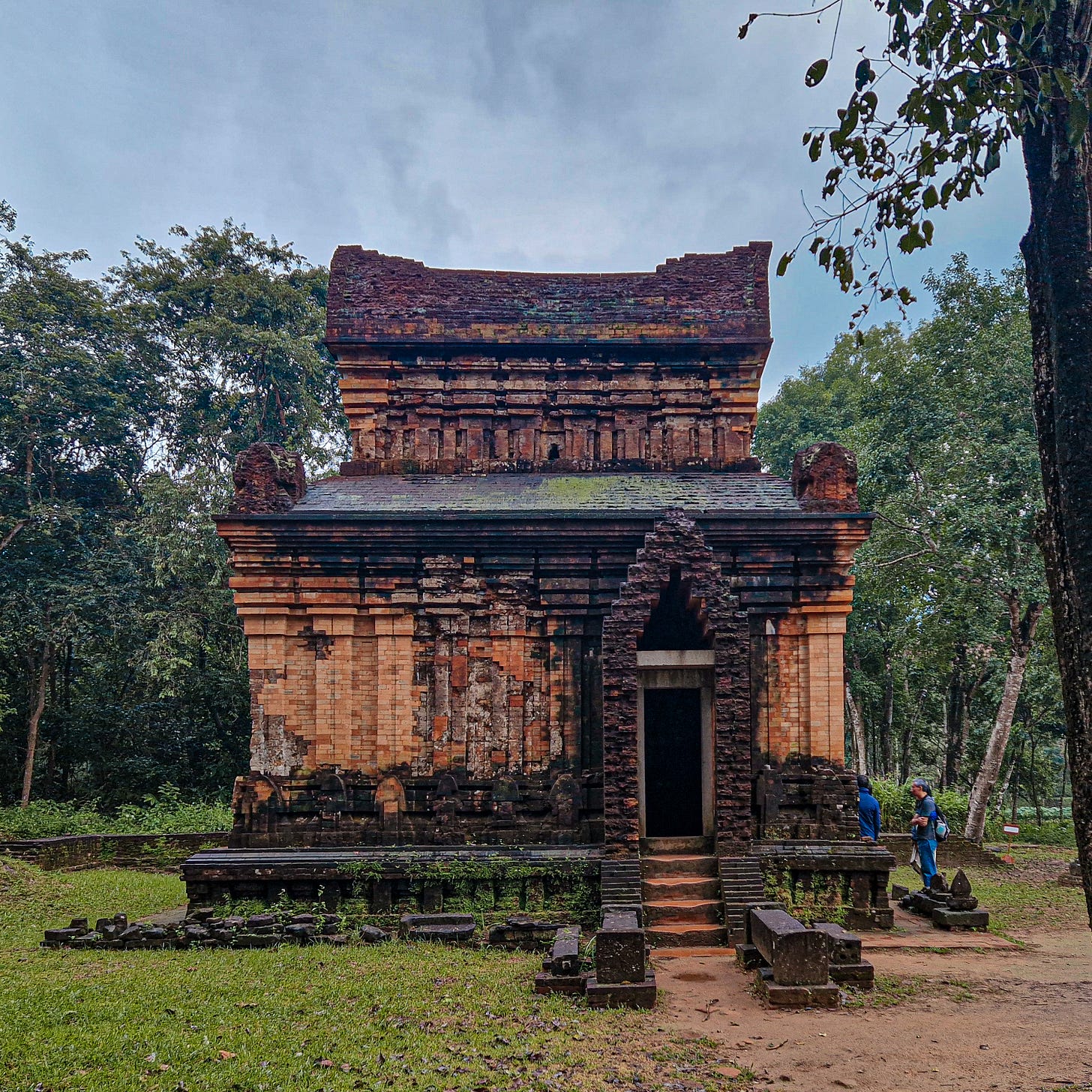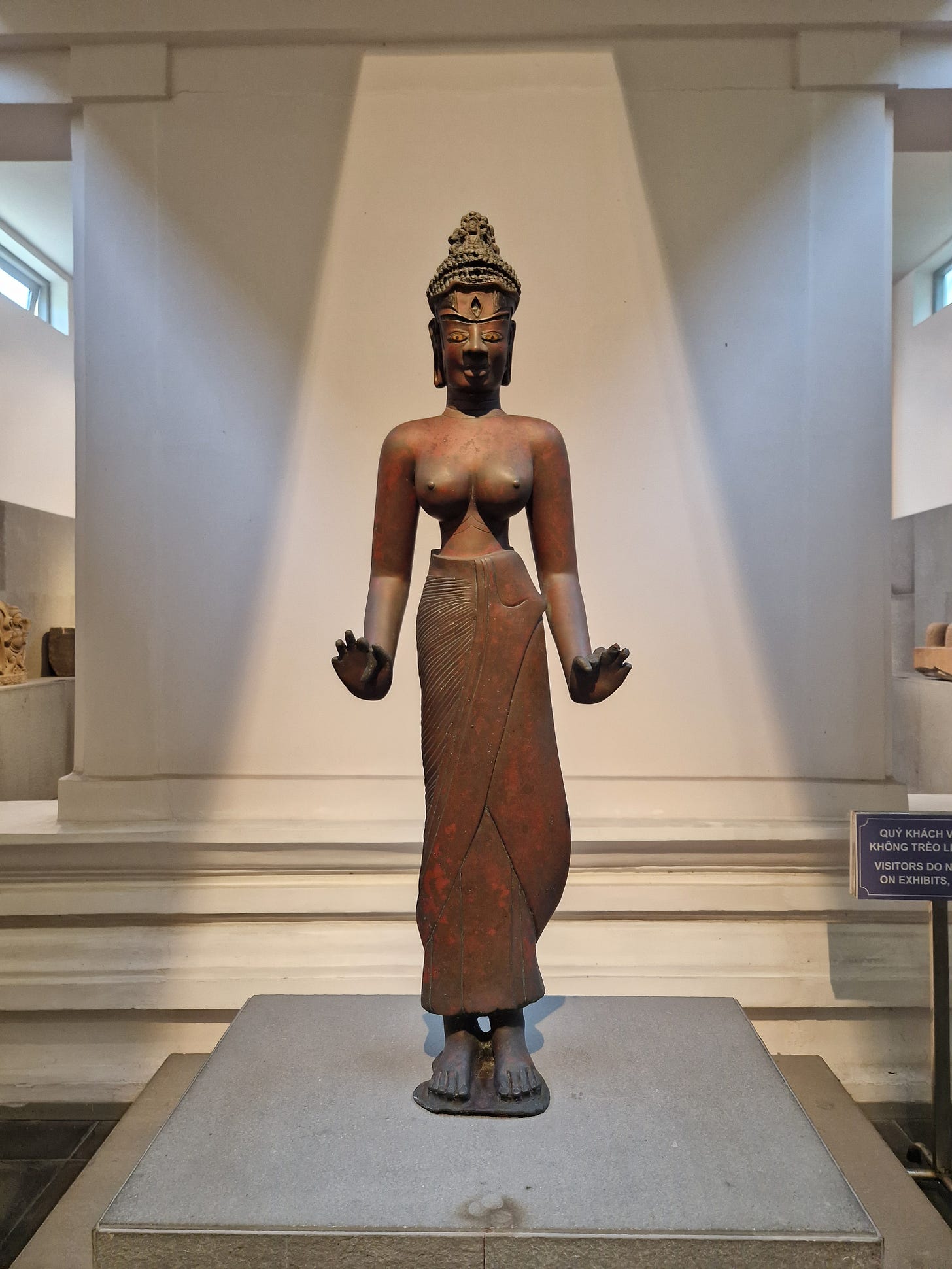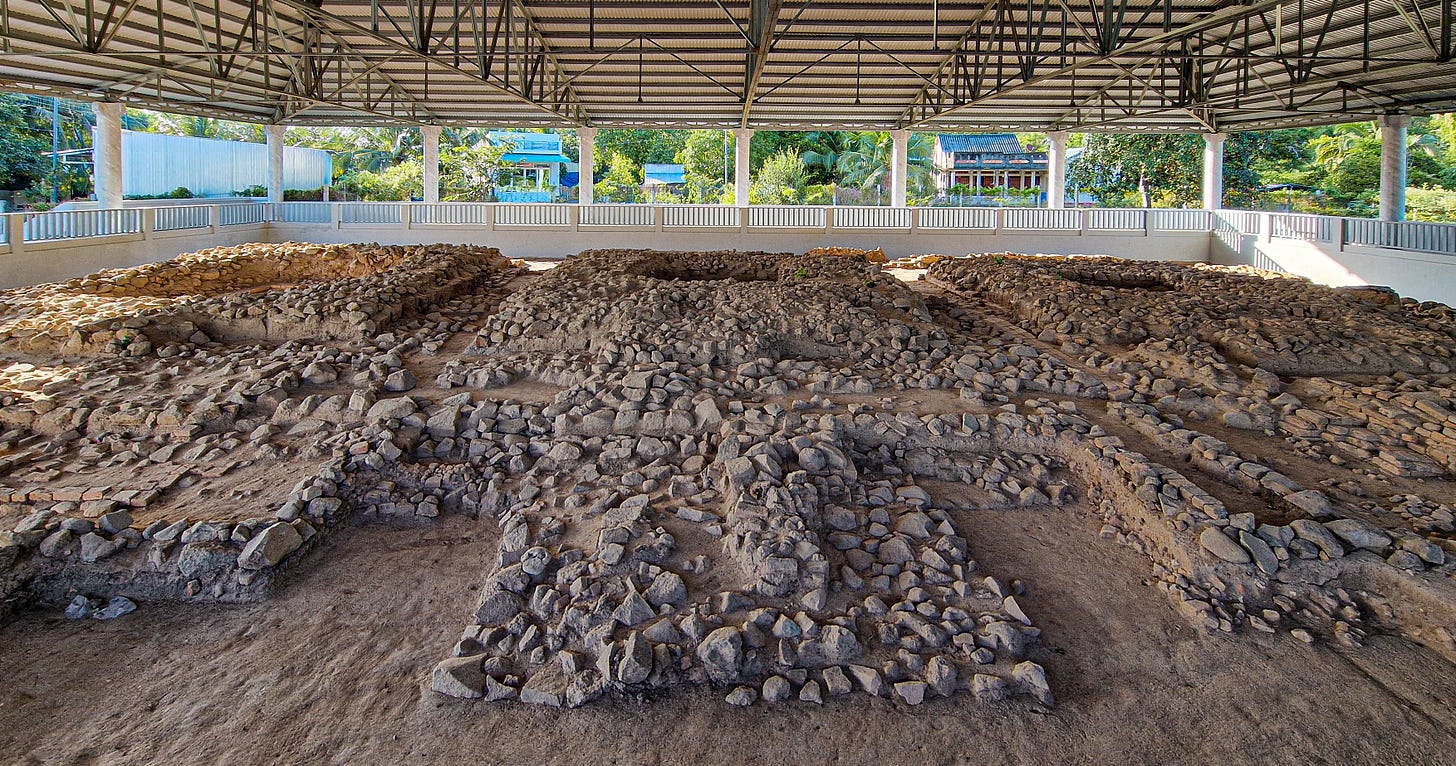For much of the twentieth century, Vietnam was divided into two countries: communist North Vietnam and anti-communist South Vietnam. During this time, people across the world wondered whether the two halves would ever reunite.
Yet the idea of a united Vietnam running from the borders of China in the north to Mekong Delta in the south is itself remarkably recent idea.
In the entirety of its history, the S-shaped Vietnam that we see on the map today has only existed for about 91 years: “never before 1802, for forty-three years in the 19th century, six months in 1945 and for forty [eight] years since 1976.”
Until just five hundred years ago, Vietnamese speakers were mostly limited to the Red River Basin of Northern Vietnam.
The rest of the country was instead dominated by a constellation of Hindu states known as the Champa kingdoms, the eastern-most Hindu kingdoms in mainland Asia.
Over a thousand years, they would produce a fascinating matrilineal society, constructing vast Hindu temples - not only to Shiva and Vishnu - but to also to Allah and the Abrahamic first woman Eve.
This is their story.
The Rise of Champa
Hinduism spread to Vietnam remarkably early. The earliest known Sanskrit inscriptions in the country date from the 4th century, and Hindu temples began to be built at the mouth of the Mekong Delta shortly afterwards.
Indeed the Mekong itself may derive its name from 'Maa Ganga', and its river basin would eventually give birth to Angkor Wat, the largest Hindu temple in the world.
Around 600AD, the Chams had formed a Hindu polity known as Champa and from this point until the 11th century, they dominated the southern two-thirds of Vietnam’s coastline.
Its important to understand, though, that Champa was not a single state but rather, as Christopher Goscha describes it as "an archipelago-like constellation of small, interconnected coastal kingdoms scattered down the central coastline... a patchwork of often overlapping mandalas."
Nonetheless, the Chams gradually transformed littoral Vietnam into a trading entrepot, and began using their newfound wealth to train up large elephant squadrons, and adorn the coastline with monumental brick Shiva temples.
The largest of these was Mỹ Sơn, a complex built to identify King Bhadravarman with the Hindu god Shiva.
Keep reading with a 7-day free trial
Subscribe to Travels of Samwise to keep reading this post and get 7 days of free access to the full post archives.







